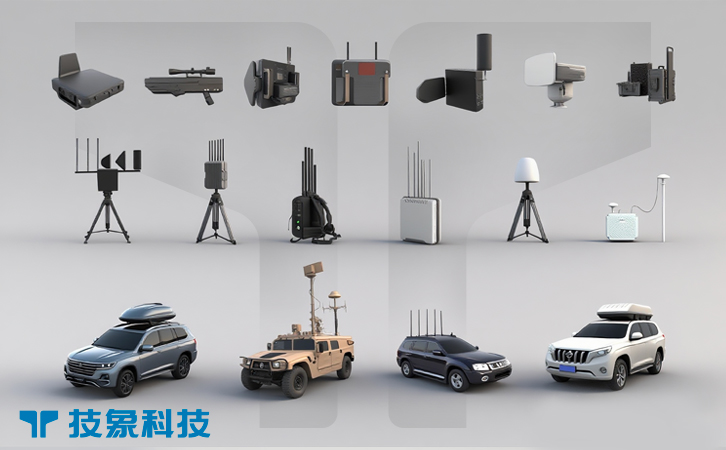The surge in drone usage, with over 6 million UAVs worldwide in 2025, has made kinetic counter-drone systems—using nets, guns, and projectiles to physically capture or disable rogue drones—a critical defense tool. These systems provide immediate, non-electronic neutralization, ideal for scenarios where jamming risks interference or lasers are impractical due to weather. By launching nets or projectiles to entangle or down UAVs, they ensure safe recovery for forensics, minimizing collateral in urban areas, events, or borders. Unlike passive or energy-based methods, kinetic systems offer tangible control against autonomous drones. This article explores the escalating drone threat, the mechanics of kinetic systems, their real-world applications, and the challenges and future potential of this direct counter-UAV approach.
I. The Escalating Drone Threat and Need for Kinetic Systems
Rogue drones have escalated threats to security, with incidents like smuggling into prisons or disruptions at events rising to over 2,500 globally in 2024, causing economic losses and safety concerns. In military contexts, low-cost UAVs conduct swarms or attacks, as seen in Ukraine, overwhelming defenses and necessitating immediate responses. Civilian risks include unauthorized filming or payload delivery, where drones exploit agility to evade electronic countermeasures.
Traditional solutions like jamming fail against RF-silent autonomous drones, while lasers face weather limitations. Kinetic systems fill this gap by physically capturing drones, effective for evidence collection and in populated areas. Their role is vital for immediate action, as highlighted in 2025 developments where nets and projectile launchers counter rising threats safely. The DEFENSE Act, enacted in September 2025, supports kinetic tools for civilian sites, emphasizing their importance in addressing drone speed and autonomy through direct interception.
II. Mechanics of Kinetic Counter-Drone Systems
Kinetic systems deploy nets, guns, or projectiles to immobilize drones physically. Net launchers, like SkyWall or DroneCatcher, fire compressed-gas propelled nets up to 100 meters to entangle propellers, causing loss of lift, often with parachutes for safe descent. Guns and projectile systems, such as anti-drone rifles or grenade launchers, use ballistic methods to strike or net drones, with ranges extending to 500 meters in vehicle-mounted variants.
The mechanics involve detection via integrated sensors, followed by launch: AI-assisted aiming ensures precision, as in air-to-air net guns that capture threats mid-flight. Advantages include effectiveness against autonomous UAVs, no spectrum interference, and recovery for forensics. Limitations include short ranges, wind sensitivity, and debris risks without mitigation. In 2025, advancements in lightweight materials and AI targeting, as in Primetake’s anti-drone weapons, have enhanced accuracy and safety. These mechanics make kinetic systems a key tactical tool in C-UAS operations.
III. Applications and Real-World Deployments
Kinetic systems are deployed in civilian and military settings for direct drone capture. At airports, net guns like those from Zenadrone prevent incursions by safely netting UAVs. Events use handheld launchers to counter filming drones, as in 2025 U.S. festivals where systems ensured safety. Prisons employ projectile systems to stop smuggling, reducing incidents by 40%.
In military applications, kinetic tools neutralize threats in the field. The U.S. forces use grenade launchers and net guns in 2025 exercises for swarm defense. Border patrols capture smuggling drones with air-to-air nets, as in European operations. The Counter UAS Technology USA Conference in December 2025 showcased these, emphasizing hybrid kinetic-electronic systems. Success relies on integration and training, but their direct approach makes them indispensable for evidence-based responses.
IV. Challenges and Future Prospects
Kinetic systems face range, safety, and regulatory challenges. Short distances limit use against high-flying drones, requiring sensor integration. Debris risks necessitate parachutes, while costs start at $10,000 for handheld units.
Regulatory issues include FAA restrictions on launches in airspaces, though the September 2025 DEFENSE Act eases for security. Ethical concerns involve misuse against legitimate drones, mandating protocols. International standards like ITU guidelines apply to related RF components. Future prospects are strong, with 2025 innovations in smart projectiles and AI aiming enhancing precision. By 2030, the counter-UAS market grows, with kinetic leading for capture needs. Policy support ensures ethical use, positioning these systems as a foundation of tactical defense.
Conclusion
Kinetic counter-drone systems like nets and projectiles provide direct capture for rogue UAVs, offering immediate neutralization in 2025’s threats. Their physical approach ensures recovery and safety, ideal for airports, events, and patrols. Despite challenges like range and regulations, real-world successes and innovations highlight their value. As threats evolve, kinetic systems—supported by reforms—will remain vital in layered defenses. By overcoming hurdles, stakeholders can deploy this technology for secure airspaces, ensuring evidence-based protection in a drone era.



